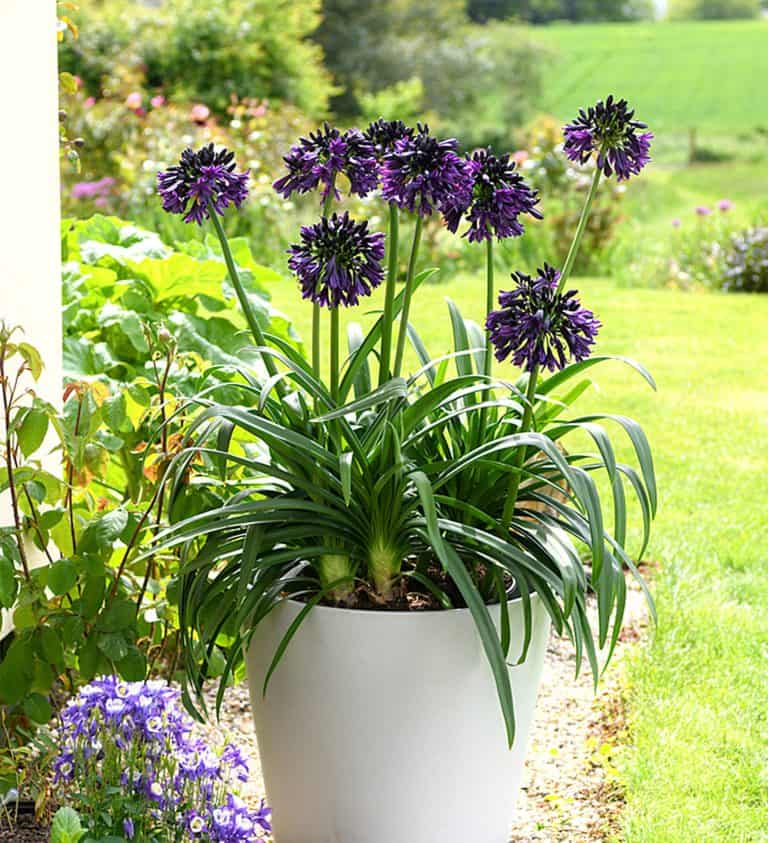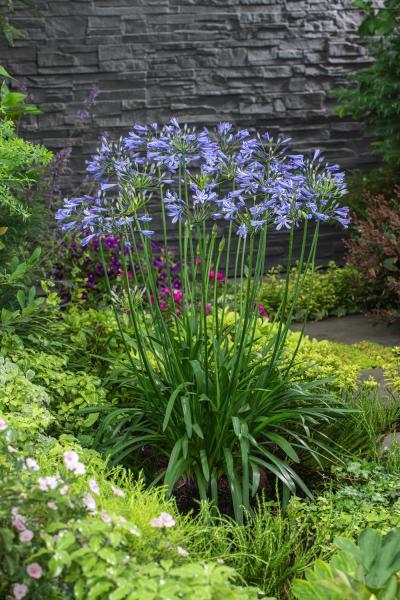Agapanthus Treatment Tips for Lush and Vibrant Flowers
Agapanthus Treatment Tips for Lush and Vibrant Flowers
Blog Article
Letting Loose the Secret to Successful Agapanthus Cultivation: Advice for a Flourishing Yard
In the realm of gardening, growing agapanthus effectively needs a strategic technique that incorporates various facets of plant treatment. By understanding the nuances of agapanthus cultivation, one can produce an atmosphere where these plants grow and bloom perfectly.
Planting Agapanthus: Best Practices
When growing Agapanthus, proper soil preparation is crucial for making certain successful development and advancement of these gorgeous blossoms. Agapanthus, frequently referred to as Lily of the Nile or African lily, flourishes in well-draining dirt with a somewhat acidic to neutral pH level - Agapanthus. Before growing, it is essential to change heavy clay soils with natural matter such as garden compost or peat moss to boost drainage and provide necessary nutrients for the plants
To grow Agapanthus, pick an area that receives complete sunshine to partial color, as this will promote healthy and balanced development and bountiful flowering. Dig an opening twice the diameter of the plant's origin sphere and put the Agapanthus at the same depth it was previously growing. Gently backfill the opening with soil, weighing down firmly to get rid of any kind of air pockets around the origins.
Water the recently planted Agapanthus thoroughly and proceed to maintain the dirt uniformly moist, especially throughout the plant's energetic growing season. Agapanthus. Using a well balanced fertilizer once a month can further sustain the plant's development and flowering. By following these ideal techniques for planting Agapanthus, you can create a magnificent display screen of these exciting blossoms in your yard
Suitable Soil Conditions for Agapanthus
For ideal development and blooming success of Agapanthus plants, ensuring the soil conditions are perfect is important. Agapanthus prefers dirt that is abundant in nutrients, so incorporating a balanced fertilizer throughout the growing season can promote healthy and balanced growth and vivid flowers.

Watering and Feeding Tips
To ensure healthy and balanced development and lively flowers, proper watering and fertilizing methods are important for successful Agapanthus farming. Agapanthus plants benefit from regular watering, specifically during the expanding season.
When it comes to feeding Agapanthus, a well balanced plant food with equal components nitrogen, phosphorus, and potassium can be used in the spring to promote healthy and balanced development and flowering. Slow-release fertilizers are ideal for supplying nutrients slowly over an extended period. Avoid over-fertilizing, as this can bring about excessive vegetation growth at the cost of blossoms.
Furthermore, incorporating organic issue like compost right into the soil can improve nutrient degrees and improve dirt structure, helping in the general health of the Agapanthus plants. By adhering to these watering and fertilizing suggestions, garden enthusiasts can guarantee their Agapanthus plants flourish and produce magnificent displays of flowers.
Trimming and Deadheading Methods
Proper trimming and deadheading techniques play a critical role in preserving the wellness and appearances of Agapanthus plants, matching the essential methods of watering and feeding for successful farming. Pruning Agapanthus includes eliminating invested flower heads, dead or yellowing leaves, and general shaping of the plant to advertise better development. Deadheading, the process of eliminating discolored blossoms, not just enhances the plant's look but also motivates more blooming.
When deadheading Agapanthus, it is recommended to trim off the flower stem at the base using sharp, clean shears. This procedure reroutes the plant's power from seed manufacturing back into root and vegetation development, promoting a healthier and extra robust plant. Regular deadheading can prolong the flowering duration of Agapanthus and avoid self-seeding, which can result in overcrowding.
In terms of trimming, Agapanthus usually gain from a light trim after flowering to tidy up the plant and encourage fresh growth. Reducing back the spent flower stems and removing any dead or damaged vegetation assists preserve the plant's vigor and overall appearance. Nevertheless, it is vital to prevent reducing right into the crown of the plant, as Our site this can compromise its health.

Protecting Agapanthus From Pests and Diseases
Implementing reliable insect and illness management strategies is critical to guarding the health and wellness and vitality of Agapanthus plants in farming. Agapanthus are typically durable plants, but they can still drop victim to different insects and diseases otherwise effectively taken care of. One common bug that affects Agapanthus is the Agapanthus borer, a caterpillar that passages into the plant, triggering damage to the fallen leaves and blossoms. To avoid invasions, regular assessment of the plants is crucial. If borers are found, they can be manually gotten rid of, or insecticidal soap can be utilized as a control action.
In enhancement to insects, Agapanthus are vulnerable investigate this site to illness such as root rot and fungal leaf places. By remaining attentive and attending to bug and illness issues promptly, gardeners can aid their Agapanthus grow and grow.

Conclusion
In final thought, effective cultivation of agapanthus needs correct planting methods, ideal soil problems, adequate watering and fertilizing, normal trimming and deadheading, and defense visit here from conditions and pests. By following these ideas and methods, gardeners can make sure a growing yard loaded with lovely agapanthus blossoms. Agapanthus. Remember to maintain consistent care and interest to information to advertise the wellness and long life of these stunning plants
When planting Agapanthus, correct dirt prep work is essential for guaranteeing successful growth and development of these stunning flowers.Water the recently planted Agapanthus completely and continue to keep the soil evenly moist, especially during the plant's active expanding season.For ideal growth and blooming success of Agapanthus plants, guaranteeing the soil conditions are excellent is essential. When transplanting or growing Agapanthus, make certain the dirt is well-prepared to supply the needed foundation for the plants to establish themselves successfully. One usual parasite that impacts Agapanthus is the Agapanthus borer, a caterpillar that tunnels into the plant, creating damages to the leaves and flowers.
Report this page